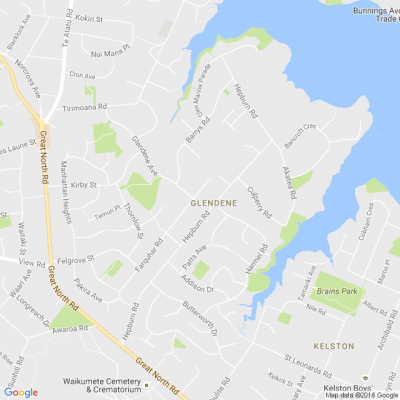Should everyone in managed isolation wear an electronic bracelet? What do YOU say?
Health Minister Chris Hipkins is not ruling out the use of electronic bracelets for those in managed isolation after a third person allegedly escaped in the space of six days. The Government is tightening monitoring of those in managed isolation facilities after Queenstown man Martin McVicar, on Thursday night, allegedly jumped down the Distinction Hotel fire escape, eluded police and made a mad dash for booze in Hamilton. But Hipkins said the All-of-Government response had already improved significantly from a man's escape from a facility in Auckland on Tuesday night, when health officials failed to provide timely advice to the Countdown that the man had visited.
By the time the Health Ministry was in touch, Countdown had already viewed CCTV footage, shut shop, completed a deep clean and chosen to self-isolate 18 staff members. "The health communication with Countdown was certainly too late in the piece," Hipkins said. "It does not meet my expectations around the speed of the response and that message has been well understood by all of the relevant health officials." The Health Ministry was quickly part of the response in Hamilton, and should be part of every such response, he said. The Government would be making announcements about ways to tighten up monitoring of those in managed isolation, but Hipkins wouldn't be drawn on the use of electronic bracelets. The use of such bracelets has been floated University of Otago public health expert Professor Nick Wilson. "New Zealand needs to learn all the lessons possible from the apparent failure of quarantine systems in Melbourne. New Zealand could also explore the benefits and costs of the use of electronic bracelets for people, as used in Hong Kong," Wilson said. The bracelets in Hong Kong are mandatory and correspond to an app. If someone tries to break quarantine, it issues a warning. Wilson said the focus should be on the system failures - for example, inadequate fencing or security - rather than the individuals involved. "All systems should be designed to account for the whole range of human behaviour – including people who don't follow the rules." It has been 70 days since the last case of community transmission, and there are two new cases yesterday - both contained in managed isolation facilities. The first case is a man in his 20s who arrived on June 28 from India, while the second is a man in his 20s who arrived on June 27 from England. Both tested positive on their day 12 tests. There are now 23 active cases of coronavirus, none of whom require hospital care. On Thursday there were 2575 tests, still well short of the recommended 4000 daily tests, and Hipkins said the numbers would ramp up in coming days. Part of the reason the testing was too low, he said, was that GPs had told people to get tested but they were being turned away by clinicians at community-based assessment centres (CBAC). Every person showing up at a CBAC with a GP's instruction to be tested should be tested, he said. There have been three escapes out of just under 28,000 people in total who have come through quarantine and managed isolation facilities. "I don't accept people knowingly and willingly breaking the law represent a flaw in the system. These are not maximum security prisons. These are hotels," Hipkins said. "If someone broke into your house and stole all of your stuff, and then turned around and said, 'Well, you should have had better locks,' I don't think anyone would accept that." He said the increase in facility breaches could be an indication of the type of New Zealanders now returning from overseas. "There are fewer families coming through, there are more single people coming back, there are more people who have more complex health needs." He wouldn't be drawn on the reasons for McVicar's alleged escape. The staffer of the Hamilton liquor store who served McVicar said: "He walked in and bought a four-pack of Leffe Blonde and a pinot noir." McVicar, 52, appeared in the Hamilton District Court via audio visual link yesterday and faced a charge of intentional damage of a 52-inch TV and intentionally failing to comply with an order under the Covid-19 Public Health Response Act by leaving a managed isolation facility and purchasing alcohol. He was remanded in custody and denied bail. He will reappear in court on July 15.
Last Saturday, a woman jumped two fences at the Pullman Hotel in Auckland shortly before 6.20pm and was located soon after a couple of blocks away at 8pm on Anzac Ave. She is appearing in the Auckland District Court on Monday. On Tuesday night, a man sneaked through a gap in the fence at the Stamford Plaza in Auckland and visited a Countdown before returning 70 minutes later. He has also been charged. There is now meant to be 24/7 police presence at every one of the quarantine and managed isolation facilities, as well as a lead security person at each facility.
=========================================================
Share your summer photos! 📷
Taken some beautiful snaps lately? Whether it's rainbows, sunsets or a beautiful summer's day, we'd love you to share the joy with us.
Share a photo in the comments below

⚠️ DOGS DIE IN HOT CARS. If you love them, don't leave them. ⚠️
It's a message we share time and time again, and this year, we're calling on you to help us spread that message further.
Did you know that calls to SPCA about dogs left inside hot cars made up a whopping 11% of all welfare calls last summer? This is a completely preventable issue, and one which is causing hundreds of dogs (often loved pets) to suffer.
Here are some quick facts to share with the dog owners in your life:
👉 The temperature inside a car can heat to over 50°C in less than 15 minutes.
👉 Parking in the shade and cracking windows does little to help on a warm day. Dogs rely on panting to keep cool, which they can't do in a hot car.
👉 This puts dogs at a high risk of heatstroke - a serious condition for dogs, with a mortality rate between 39%-50%.
👉 It is an offence under the Animal Welfare Act to leave a dog in a hot vehicle if they are showing signs of heat stress. You can be fined, and prosecuted.
SPCA has created downloadable resources to help you spread the message even further. Posters, a flyer, and a social media tile can be downloaded from our website here: www.spca.nz...
We encourage you to use these - and ask your local businesses to display the posters if they can. Flyers can be kept in your car and handed out as needed.
This is a community problem, and one we cannot solve alone. Help us to prevent more tragedies this summer by sharing this post.
On behalf of the animals - thank you ❤️









 Loading…
Loading…





